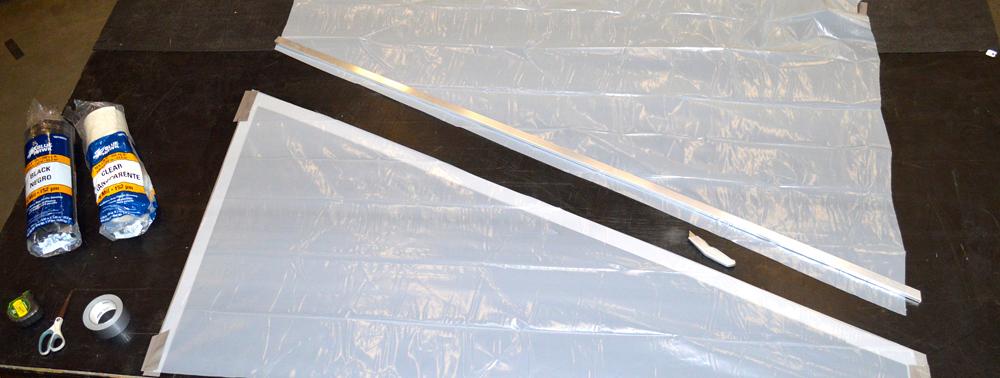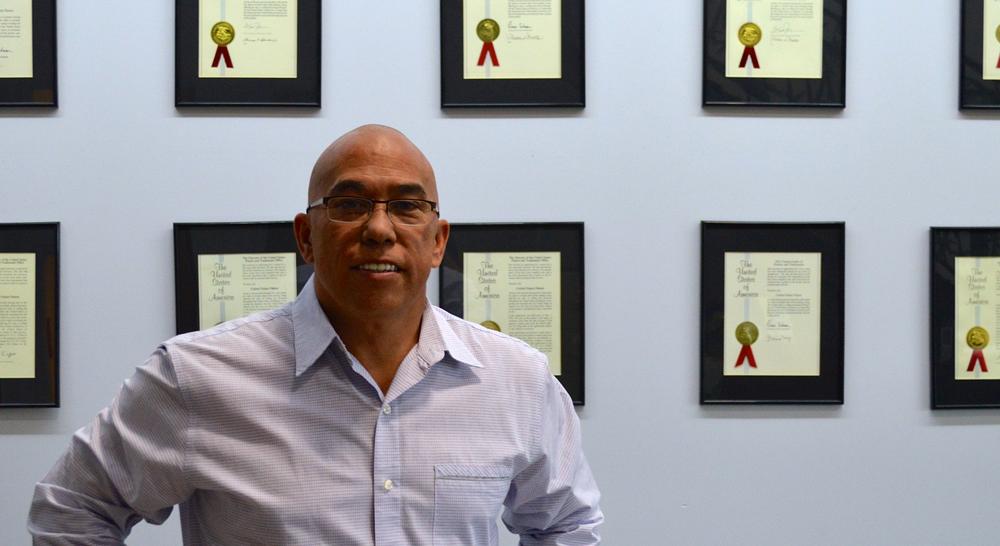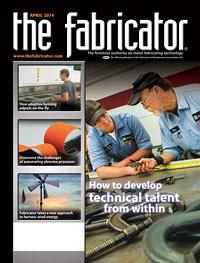Senior Editor
- FMA
- The Fabricator
- FABTECH
- Canadian Metalworking
Categories
- Additive Manufacturing
- Aluminum Welding
- Arc Welding
- Assembly and Joining
- Automation and Robotics
- Bending and Forming
- Consumables
- Cutting and Weld Prep
- Electric Vehicles
- En Español
- Finishing
- Hydroforming
- Laser Cutting
- Laser Welding
- Machining
- Manufacturing Software
- Materials Handling
- Metals/Materials
- Oxyfuel Cutting
- Plasma Cutting
- Power Tools
- Punching and Other Holemaking
- Roll Forming
- Safety
- Sawing
- Shearing
- Shop Management
- Testing and Measuring
- Tube and Pipe Fabrication
- Tube and Pipe Production
- Waterjet Cutting
Industry Directory
Webcasts
Podcasts
FAB 40
Advertise
Subscribe
Account Login
Search
Wind energy meets the sail
Seattle-area fabricator applies unique generator technology to the wind business
- By Tim Heston
- April 21, 2014
- Article
- Shop Management
Several years ago Pete Agtuca, the president of Laser Cutting Northwest (LCNW), an Auburn, Wash.-based fabricator, had what he thought was a game-changing technology on his hands. He and a team of experts, which included a physicist, an electrical engineer, and an industrial engineer from the University of Washington, developed a generator that produces significant electricity at just a few hundred RPMs. Conventional generators don’t start producing significant power until they reach 1,800 RPMs.
In 2007 he launched 3 Phase Energy Systems Inc. (3PESI) to market the technology. The first target market: generating power from exhaust.
The company’s dust collectors, which filter particulate produced from laser cutting, inspired Agtuca to develop the generator in the first place. The collectors blew a stream of 73-MPH wind to the outside. From a scientific perspective, that airstream represented a constant, predictable source of kinetic energy, and for several years 3PESI worked to adapt its low-RPM generator technology so that it could be retrofitted onto a standard dust collector. Agtuca called this “regenerator” technology, because it generated electricity from the waste (exhaust air) of an electricity-consuming device (a dust collection system).
The business plan seemed rock-solid. After all, metal fabricators and other manufacturers of all types use dust collectors. The company entered into an agreement with Donaldson Torit, which researched where the dust collection market was going and if 3PESI’s generator technology would fit into the picture. The verdict: The cost of the regenerator unit would stay about the same, but the price of variable-frequency drives (VFDs) would continue to decrease. With VFDs, motors turn up or down their speed and load to meet requirements, saving far more electricity than Agtuca’s product could hope to generate.
“So looking forward at their market, [Donaldson] said it wouldn’t be sustainable,” Agtuca said. “With the results of their findings, we decided not to pursue it.”
But 3PESI still had the body of knowledge gained from developing the low-RPM generator. As Agtuca recalled, “We thought this just cannot go to waste. So we started looking at other applications.”
From there, he and his team turned their focus to another market: wind energy.
Half Sail, Half Wing
First they identified the inefficiencies with the prevailing technology: the triblade, horizontal-axis wind turbine. After some research the team discovered several elements of inefficiency that focused on excess weight and rotor loss—basically, the fact that some wind escapes past the blades without affecting them. Put another way, some wind energy fails to transfer into rotational energy.
Wind turbine blade design, they found, had followed a path largely defined by aeronautics, going back to the Wright brothers. If you compare an airplane propeller with a wind turbine blade, you’ll notice modifications on the turbine rotor adapted for wind, but the basic design is the same.
At this point 3PESI connected the dots: If they could develop wind turbine blades that start to spin at very low wind velocities, and turn that motion into a significant amount of energy with their low-RPM generator, they may be on to something.

Figure 2
Last year the company replaced the sail material on its prototype wind tower with 6-mil greenhouse plastic, at a cost of about $1.25 per sail.
What they needed was a blade that could start rotating with only a little wind. What other designs attempt to harness just a little bit of wind? Being near Seattle, they just looked to the coast: sailing. Not just any sail would do, though. Traditional windmills have blades that resemble sails, of sorts, but the design didn’t meet 3PESI’s weight and efficiency requirements.
What sail design works with minimal wind? To uncover this, Agtuca worked with Paul Bogataj of AeroHydro (www.aerohydro.com), a former Boeing engineer who also happened to have a sailing background. The team came upon their final design by looking at some of the earliest sailing in human history: Polynesian crab sail boats, which had (and still have) sails that were thin at the bottom and wide at the top. The wide sail at the top effectively transfers just a little bit of wind energy into a lot of kinetic energy that pushes the boat forward (see Figure 1).
From here Bogataj used software simulation to design an inverted sail. He and Agtuca reduced weight by minimizing the surface area, using lightweight sail material for the blade body, and incorporating aerospace alloys—including 6061-T6 aluminum—for the sail frame. Last year the company’s prototype had (appropriately enough) a Seahawks banner as part of the sails. That tattered after a storm, so the team decided to replace the sails with the cheapest material they could find: 6-mil greenhouse plastic, at a cost of about $1.25 per sail (see Figure 2).
A rotor end cap borrows from the thinking behind winglets that improve flight efficiency on Boeing 737s. The end cap reduces rotor end loss—that is, the loss of wind as it flows off the end of a blade. “This forces the high-pressure air to escape in one direction, creating thrust in the opposite direction,” said Agtuca. This provides the efficiency needed to allow the blades to start rotating with so little wind—1.5 MPH is enough to send the blades spinning within two to three seconds. According to Agtuca, many conventional turbines take about 16 seconds to reach a speed for maximum efficiency.
All this led to 3PESI’s latest product: Powersails™. The design has a lightweight aerospace-alloy frame, and tubular components make up the tower. The tower components are robotically welded, and frame components are laser cut and formed, all performed on LCNW’s shop floor.
The shop is looking to reduce manufacturing costs further. Tubular components for the tower section will remain, but the company plans to start using extrusions for the sail frames, as opposed to cut and formed sheet metal. “When you buy a pound of aluminum, it will be X amount,” Agtuca said. “But when you buy a pound of extruded aluminum, it is just a little bit more.”
It also has what the company calls an adjustable swept area (ASA), allowing the sail length to be adjusted for wind conditions. The blades can be extended to 22 feet, to capture as much energy as possible from low to moderate winds, then retracted back to 16 ft. for high winds (see Figure 3).
The Powersails system arrives at a customer in parts, including the tower, generator, electronics, batteries, and blades—all contained in what 3PESI calls a POD, or power on demand, system—and within two hours it can be assembled into a wind turbine. Stabilizer jacks within the POD base extend out in a cone to disperse the weight.
Last year the company launched a Kickstarter campaign to ask for funding. Although the funding goals weren’t met, spreading the word did spark the interest of other parties who had attempted similar ideas but failed. The reason some failed was that the power production was too low. 3PESI’s system, though, is well into the multikilowatt range, thanks to the low-RPM generator technology.
Agtuca and his team were indeed on to something.
Finding a Market
So who can use such a product? The most obvious customers are emergency personnel after hurricanes, tsunamis, floods, tornadoes, or any other extreme event that knocks out power, especially in remote places. A relatively flat, stable surface is all that’s required. The wind tower could be air-lifted in, assembled, and generating electricity within hours (see Figure 4).
Mobile wind energy, though, needs to be ready for deployment immediately for an emergency. To that end, the company has launched its Disaster PREP, or Powersails Relief Exchange Program. When Powersails owners sign up for this program, they agree to send their system and associated POD if it could help in a crisis. 3PESI coordinates the system removal, inspection, and transportation to the disaster area, and then coordinates the delivery of the owner’s new replacement system. Owners opting for an exchange are compensated for the time they don’t have use of the system.
Will this product take off? At this writing, the company is working to obtain certification through the National Renewable Energy Laboratory and the Small Wind Certification Council. In preparation for the certification process, 3PESI has installed Powersails at three demo sites to collect data. Companies need this certification to compete in the market; otherwise, buyers find it difficult to get financing, be it for a wind energy system or any other renewable energy venture.
Distributed Wind Energy
Agtuca added that although the emergency and mobile wind energy niche may be a good starting point, it’s highly unpredictable and not large enough to grow a sizable business. But another market does have some scaling-up potential: distributed wind, or wind energy generated by a private business to power its own facilities, reduce its power bill, and feed some energy back to the grid.
The smaller power bills and accompanying tax credits could make Powersails a viable investment for many businesses, especially since the design capitalizes on producing wind energy with the relatively small amount of wind in urban areas (hence the product’s tagline: Harness the power of urban wind).
“America is resource-rich,” Agtuca said. “We’re just efficiency-poor. We hope this product will bring a distributed wind energy model so that businesses that can sacrifice three parking spaces can produce renewable energy on-site, to offset their energy consumption.”
Powersails now are available in 12-kW models—not very much for business consumers. “At Laser Cutting Northwest, we use monthly power at the megawatt level,” Agtuca said. “12 kW of power isn’t really going to put a dent in that.” That’s why for the distributed wind market, Agtuca is developing a product that will produce 55 kW of power or more. Although these will be permanent structures, they will use the same technology as today’s mobile Powersails system.
How Product Launches Complement Contract Fabrication
LCNW’s roots go back to a successful product launch out of Agtuca’s garage: a container system that makes loading cargo planes far more efficient. In all, he has been awarded 10 patents, and 11 more are pending (see Figure 5).
Agtuca participates in several local groups, including Element 8 (previously known as Northwest Energy Angels), a clean technology investment organization that aims to connect people with product ideas with people who can fund and make those products. There he met the inventors of an efficient magnetic coupling—a product called Flux Drive (www.fluxdrive.com) that eliminates high peak power during start-up—and is now working with them to manufacture the product.
But he also knows that many products fail, like the regenerator technology for the dust collection market. With any invention comes risk, but according to Agtuca, high-product-mix contract manufacturing is a good platform to mitigate such risks.

Figure 4
The Powersails system is a mobile wind tower platform that can be assembled in a few hours.
LCNW, a 30-employee company with about 34,000 square feet of manufacturing space, has about 1,400 customers in its database, and about 35 percent of those provide relatively consistent work (see Figure 6). Customers come from sectors such as automotive, aerospace, architectural metal, and material handling.
“Laser Cutting Northwest can flourish in supporting a customer base here in the Northwest and produce a product line on the side,” Agtuca said. “If you’re just a job shop, you’re dependent on the economy and how well your customers are doing. After the 2009 recession, many of our customers were doing poorly. But since we had our product lines, they helped balance it out, so the peaks and the valleys weren’t as painful.”
Contract work during the good times (like now) also can complement the company’s product lines, especially during the lengthy development process. Consider the robotic welding cell. The fabricator purchased it two years ago to weld the Powersails tower section, which took one of the company’s certified welders more than two hours to weld because of all the repositioning required. The robot got the job done in 20 minutes. But as word got out that the fabricator had a robotic workcell with a 100-in. horizontal work envelope, other jobs started coming in the door.
Agtuca chuckled. “It’s amazing how that works.”
About the Author

Tim Heston
2135 Point Blvd
Elgin, IL 60123
815-381-1314
Tim Heston, The Fabricator's senior editor, has covered the metal fabrication industry since 1998, starting his career at the American Welding Society's Welding Journal. Since then he has covered the full range of metal fabrication processes, from stamping, bending, and cutting to grinding and polishing. He joined The Fabricator's staff in October 2007.
subscribe now

The Fabricator is North America's leading magazine for the metal forming and fabricating industry. The magazine delivers the news, technical articles, and case histories that enable fabricators to do their jobs more efficiently. The Fabricator has served the industry since 1970.
start your free subscription- Stay connected from anywhere

Easily access valuable industry resources now with full access to the digital edition of The Fabricator.

Easily access valuable industry resources now with full access to the digital edition of The Welder.

Easily access valuable industry resources now with full access to the digital edition of The Tube and Pipe Journal.
- Podcasting
- Podcast:
- The Fabricator Podcast
- Published:
- 04/16/2024
- Running Time:
- 63:29
In this episode of The Fabricator Podcast, Caleb Chamberlain, co-founder and CEO of OSH Cut, discusses his company’s...
- Industry Events
16th Annual Safety Conference
- April 30 - May 1, 2024
- Elgin,
Pipe and Tube Conference
- May 21 - 22, 2024
- Omaha, NE
World-Class Roll Forming Workshop
- June 5 - 6, 2024
- Louisville, KY
Advanced Laser Application Workshop
- June 25 - 27, 2024
- Novi, MI


































